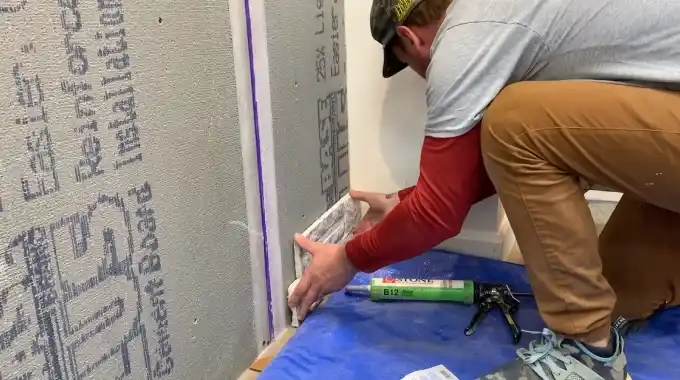Last Updated on March 22, 2023
Installing stacked stone on painted drywall can be a tricky job and one that should not be taken lightly. There are many reasons why attempting to install this type of material on such a surface is not advisable, from the potential for damage to the appeal of the finished product.
Consider that this kind of project may require specialized tools and expertise that someone cannot easily acquire without experience in home improvement projects. Even if completed successfully, the project’s long-term durability is not certain without regular maintenance or repair costs to keep it going.
This blog post will discuss in greater detail why installing stacked stone on painted drywall should generally be avoided and provide helpful advice for those considering taking on this project.
Can I Install Stacked Stone on Painted Drywall: Reasons
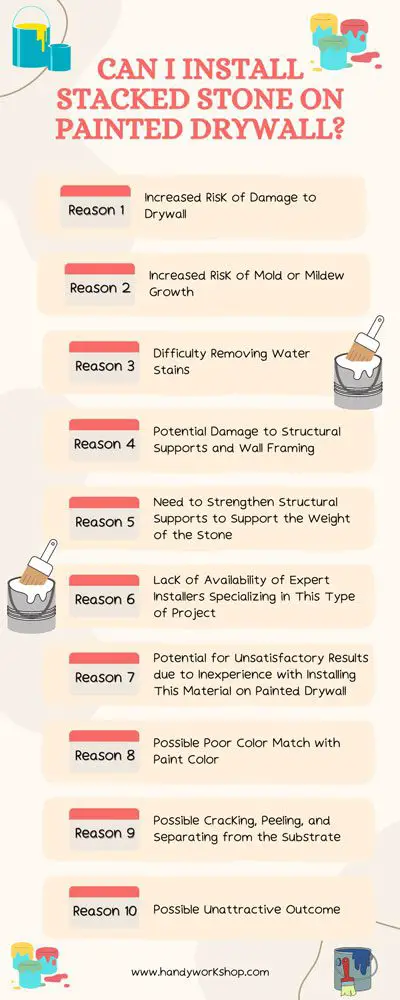
Reason 1: Increased Risk of Damage to Drywall
Installing stacked stone on painted drywall may be detrimental because it increases the risk of damage to the drywall. This is because the stone is a naturally porous material that can absorb moisture, and when it does so, it expands and contracts with changes in humidity levels.
This could cause warping, cracking, or buckling of the drywall underneath, leading to costly repairs. Furthermore, if this damage causes small gaps between the stacked stones, moisture will seep into them and further increase the risk of water damage.
Reason 2: Increased Risk of Mold or Mildew Growth
Installing stacked stone on painted drywall increases the likelihood of mildew and mold growing. As mentioned before, stone is a naturally porous substance that absorbs moisture easily.
If there is any level of dampness present in the area where the stacked stone is installed, whether from rainwater or condensation, the moisture can quickly seep into the gaps between each piece of stacked stone and create an environment ideal for mold growth.

Not only can mold ruin the aesthetic appearance of your home’s interior design scheme, but it also poses serious health risks. Hence the reason installing stacked stone on painted drywall ought to be avoided if possible.
Reason 3: Difficulty Removing Water Stains
It is also important to note that installing stacked stone on painted drywall shouldn’t be done because it can make removing water stains much more difficult than usual. Water stains are unsightly marks caused by the liquid being absorbed into surfaces such as walls.
They are especially common on painted drywall, but they can also form after having installed stacked stone too near a water source such as a shower unit or sink basin.
Removing these water stains may require unique cleaning solutions and scrubbing tools, which would otherwise have been unnecessary had you chosen not to install any stone features near these water sources in the first place.
Reason 4: Potential Damage to Structural Supports and Wall Framing
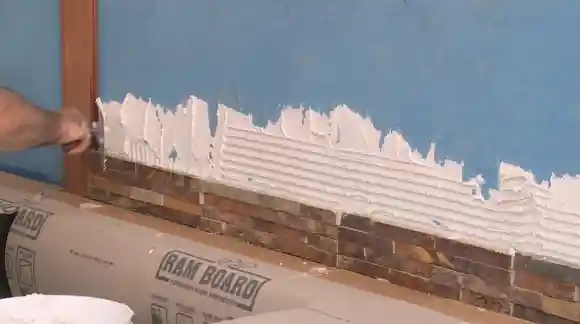
Installing stacked stone on painted drywall is not advisable because of the potential damage to wall framing and structural supports. Stacked stones are heavy and can put excessive stress on these components, leading to potential structural problems down the road.
Professional installation of a support system is necessary for the wall to bear the weight of the stacked stone. Without it, there is a high risk that the drywall can collapse or be damaged by the extra weight, resulting in costly repairs.
Reason 5: Need to Strengthen Structural Supports to Support the Weight of the Stone
Installing stacked stone on painted drywall requires additional preparation work and professionally installed support systems. The extra weight from stacked stone requires additional reinforcements and bracing within the walls so that they can bear their weight safely and securely.
This is an added expense and time-consuming effort that must be taken into consideration when deciding whether to install stacked stone directly onto painted drywall or not.
Reason 6: Lack of Availability of Expert Installers Specializing in This Type of Project
Due to the scarcity of availability of installers who specialize in this type of work, it is not advisable to install stacked stone on painted drywall as it is a complex and time-consuming job that requires specific knowledge.
This type of installation also needs to be done in the exact way the manufacturer specifies, or else the results can be unsatisfactory. It is wise to research and find experienced professionals who know how to correctly install stacked stones on drywall before attempting a DIY project.
Reason 7: Potential for Unsatisfactory Results due to Inexperience with Installing This Material on Painted Drywall
When considering installing stacked stone on painted drywall, there is a risk of unsatisfactory results due to a lack of experience. Not only does this require specialized skills but also a great amount of patience, as mistakes made during installation can be difficult to fix.
It is crucial for experienced professionals to know how to handle the material appropriately, to be aware of heat and moisture levels, and to know how it will interact with the environment. However, those who are inexperienced in this type of installation may overlook these important elements.
Ultimately, if one does not have enough experience with installing stacked stone on painted drywall, then it is best to find an installer who does.
You Can Also Read: Is it advisable to prime the drywall before tiling?
Reason 8: Possible Poor Color Match with Paint Color
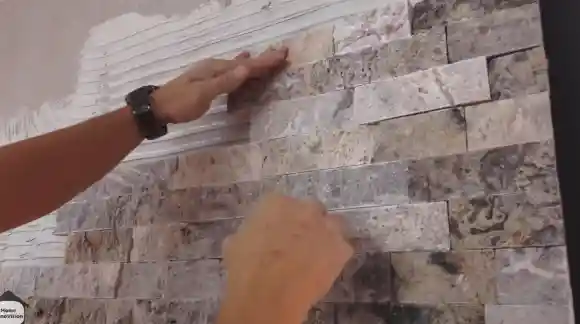
Using stacked stone on painted drywall can be a recipe for disaster when it comes to color matching. Since the colors of the paint and the colors of the stacked stone are often quite different, it is very difficult to make them look cohesive.
The colors may clash and create an unattractive result. Furthermore, any difference in sheen between the two materials can also lead to a poor outcome since one material may appear shinier or duller than the other.
Additionally, if your drywall is textured with stippling or has ridges in the paint, this will make it more difficult for the stone to lay flat against it and provide an even finish.
It is best to avoid installing stacked stone on painted drywall altogether if you want a beautiful finish that coordinates well with your décor.
Reason 9: Possible Cracking, Peeling, and Separating from the Substrate
When installing stacked stone on painted drywall, you could run into problems such as peeling, cracking, and separating from the substrate due to improper installation methods or settling that occurs over time.
This is because there needs to be a secure bond between the wall surface and the stones for them to stay put. Without this bond, all sorts of damage can occur, such as chipping, loosening of stones, or larger sections completely breaking away from the wall due to settling or vibrations in the walls.
This is why any installation process must follow specific guidelines and techniques for it to be successful long-term.
Reason 10: Possible Unattractive Outcome
The stacked stone should be placed according to design specifications to achieve an attractive outcome. Any misalignments between stones, such as gaps or large slivers, can detract from the beauty of their placement.
Using stone slabs with irregular shapes will not appear evenly across all surfaces. Opting for clean-cut stones helps achieve a more consistent look when placed together correctly in both size and shape.
What Do You Put Behind Stone Veneer?
To install stone veneer, you will need a backing material that is strong and stable enough to hold the weight of the stones. Generally, a concrete block, brick, or other masonry surface works best as a backing, but tile backer board and treated plywood can also be used.
You’ll need to make sure that the surface is clean and level before you begin the installation. Additionally, it’s important to use an appropriate adhesive or mortar in order to ensure the stone veneer stays in place.
For exterior walls, you may want to consider using a weather-resistant construction adhesive or mortar mix to further prevent movement and shifting due to temperature changes or heavy winds.
Can You Use a Thinset for Stacked Stone?

Yes, you can use a thinset for installing stacked stone as long as it is suitable for use on masonry surfaces. Thinset is a type of premixed mortar that contains sand, Portland cement, and water, which allows it to bond easily with masonry surfaces like brick or concrete blocks.
When applying thinset for stacked stone installation, it’s best practice to apply it at least 1/4 inch thick over the entire surface area where the stones will be placed.
However, if your project involves heavier stones such as granite or quartzite, then you should increase the thinnest depth accordingly in order to provide additional strength and stability during installation.
Will Stacked Stone Go Out of Style?
Stacked stone does not go out of style because it has a timeless look and classic design elements. Stacked stone has been around for centuries due to its durability and beauty.
There are wide varieties of stacked stones available on the market today, so homeowners can choose from different colors and textures that fit their individual style preferences.
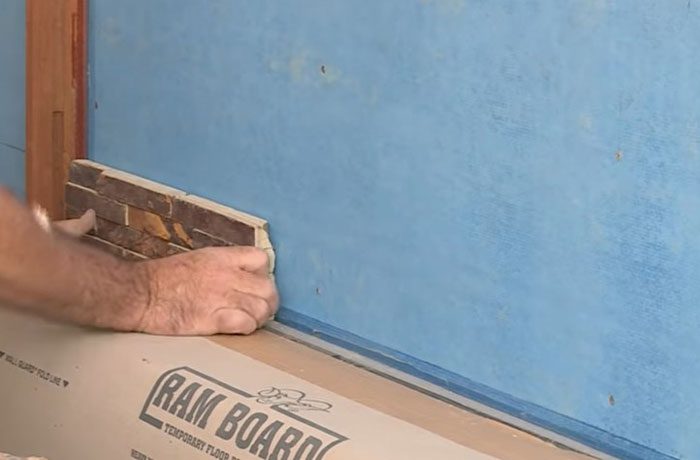
Can You Put a Stacked Stone on Plywood?
Yes, stacked stones can be placed on plywood as long as the plywood is treated properly beforehand so that it won’t warp or rot over time due to moisture exposure from the stones themselves or humidity levels in general.
Before beginning your project, make sure your plywood has been adequately sealed against moisture penetration, such as with multiple coats of paint or sealant applied onto its surface area.
This will help protect your wood from any potential damages related to water exposure while allowing you to enjoy your new stack stone feature unimpeded.
Do You Seal Interior Stacked Stone?
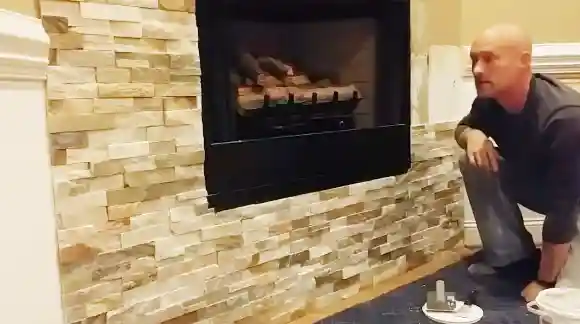
Yes, the interior stacked stone should be sealed since it’s more susceptible than the exterior versions due to low ventilation rates inside our home environment.
Sealing prevents staining from dirt particles or spills while preserving its aesthetic qualities over time by preventing discoloration caused by dust buildup, among other factors.
Sealing should also be done regularly (at least once every two years) in order for it to remain effective against wear-and-tear damage caused by everyday household activities like cooking etc.,
For best results, opt for natural-look sealers that won’t change color over time or create a glossy finish. This will ensure easier maintenance down the line by facilitating less frequent applications when compared with traditional glossy sealers typically found on market shelves.
Observations
All things considered, installing stacked stone onto painted drywall is an unwise choice in most cases due to its potential for causing structural damage as well as reducing its aesthetic appeal significantly once completed.
Not only will it result in an uneven finish, but the adhesive used for installation can also cause major damage to your drywall over time.
Furthermore, attempting such a task without adequate knowledge or expertise may add further burden on top of existing expenses should unforeseen problems arise afterward due to improper installation methods being used.
Fortunately, there are plenty of other options available that you can use instead, such as using mortar or prefabricated panels.
Ultimately it is important to weigh the pros and cons of each option before deciding which one is right for your project. With the right approach, you’ll be able to create beautiful results without risking any damage or having difficulty with installation.
